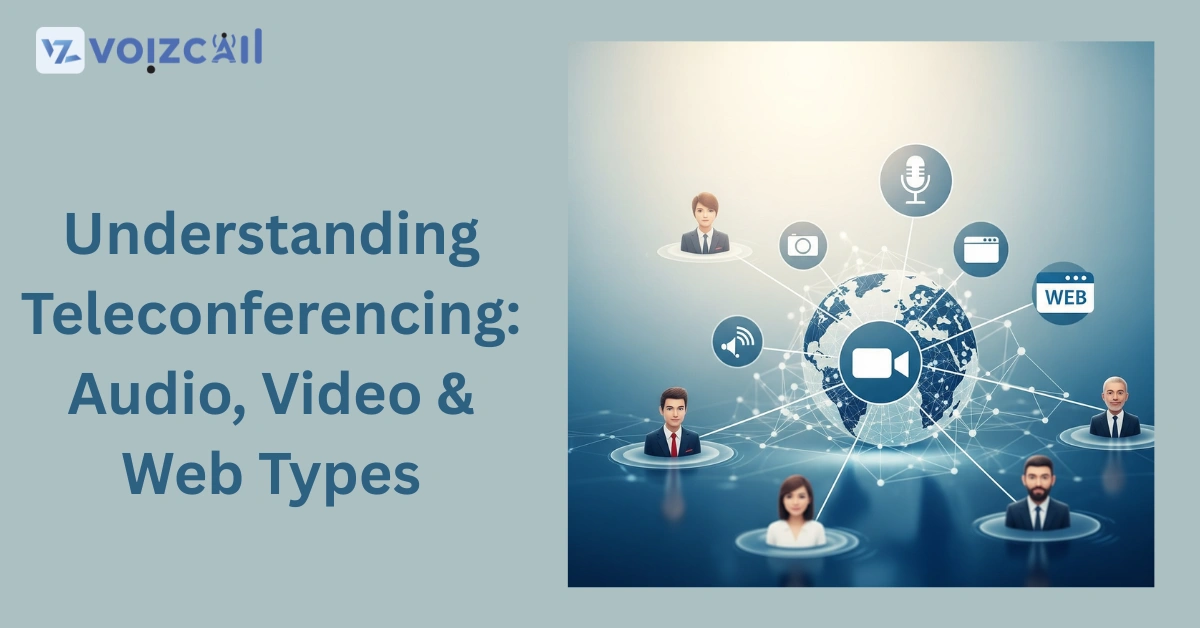


16/Jun/2025
Have you ever participated in a meeting without even getting out of your chair? That is magic of teleconferencing!
Be it the global teleconferencing you have with your fellow colleagues or the training on the couch, teleconferencing can make it all take place. This blog is going to demystify the three categories; that is, audio, video, and web teleconferencing, to know how they are used and why they are important.
Here we go!
What is Teleconferencing?
Teleconferencing Teleconferencing refers to conducting a conversation or a meeting without being within the same space. The bottom-line is to make people interconnected using the technology via phone, using the webcam, or via the internet.
1. Audio Teleconferencing
Teleconferencing is the most simple one. Audio teleconferencing sounds like a group call, when several people speak to each other on the phone or online, via a voice point of interface (such as Zoom or Skype, except that it is only voice).
Usage:
Sprint starts with checks of teams Quick team check-ins
Project updates
Budget-friendly communication
Pros: Can be installed easily, does not require internet connection
Cons: There are no visuals, it is difficult to read the body language
2. Video Teleconferencing
Using video teleconferences, you are able to have a view of the persons whom you are conversing with. This brings a human touch in the digital communication.
Advantages of Web Conferencing compared to teleconference
What makes so many companies switch call where they just talk and follow up by web conferencing?
Here’s why:
Interactive features such as polls, question and answer, and screen sharing
Document or presentation collaboration in real-time
Greater team bonding face to face video
Improved efficiency using recording of meetings and live captions
Simply, web conferencing transforms meetings into more productive and interesting processes as compared to teleconferences.
Which one should you choose?
Teleconferencing of every type has its niche.
Call / Email for Sales Inquiry Today
Audio teleconferencing can be used to place short calls or under low internet connection.
Use video teleconferencing where there is a requirement of face-to-face interaction.
Use web teleconferencing in situations in which you require a broader array of collaboration tools and a livelier session.
Final Thoughts
Teleconferencing is the new reality of our lives everywhere: on a job, in school, as well as on a personal level. It is important to know the distinction between audio, video and web teleconferencing because this enables you to use the appropriate tool whenever the need arises.
It has become a very networked world where with a single click, you can meet, share and collaborate with anybody, in any place.
Tags: Video teleconferencing, Web teleconferencing, Best teleconferencing methods 2025, VoIP conferencing solutions, SIP-based teleconferencing
Image Alt tags: Video teleconferencing meeting screenshot
Have you ever participated in a meeting without even getting out of your chair? That is magic of teleconferencing!
Be it the global teleconferencing you have with your fellow colleagues or the training on the couch, teleconferencing can make it all take place. This blog is going to demystify the three categories; that is, audio, video, and web teleconferencing, to know how they are used and why they are important.
Here we go!
What is Teleconferencing?
Teleconferencing Teleconferencing refers to conducting a conversation or a meeting without being within the same space. The bottom-line is to make people interconnected using the technology via phone, using the webcam, or via the internet.
1. Audio Teleconferencing
Teleconferencing is the most simple one. Audio teleconferencing sounds like a group call, when several people speak to each other on the phone or online, via a voice point of interface (such as Zoom or Skype, except that it is only voice).
Usage:
Sprint starts with checks of teams Quick team check-ins
Project updates
Budget-friendly communication
Pros: Can be installed easily, does not require internet connection
Cons: There are no visuals, it is difficult to read the body language
2. Video Teleconferencing
Using video teleconferences, you are able to have a view of the persons whom you are conversing with. This brings a human touch in the digital communication.
Advantages of Web Conferencing compared to teleconference
What makes so many companies switch call where they just talk and follow up by web conferencing?
Here’s why:
Interactive features such as polls, question and answer, and screen sharing
Document or presentation collaboration in real-time
Greater team bonding face to face video
Improved efficiency using recording of meetings and live captions
Simply, web conferencing transforms meetings into more productive and interesting processes as compared to teleconferences.
Which one should you choose?
Teleconferencing of every type has its niche.
Audio teleconferencing can be used to place short calls or under low internet connection.
Use video teleconferencing where there is a requirement of face-to-face interaction.
Use web teleconferencing in situations in which you require a broader array of collaboration tools and a livelier session.
Final Thoughts
Teleconferencing is the new reality of our lives everywhere: on a job, in school, as well as on a personal level. It is important to know the distinction between audio, video and web teleconferencing because this enables you to use the appropriate tool whenever the need arises.
It has become a very networked world where with a single click, you can meet, share and collaborate with anybody, in any place.